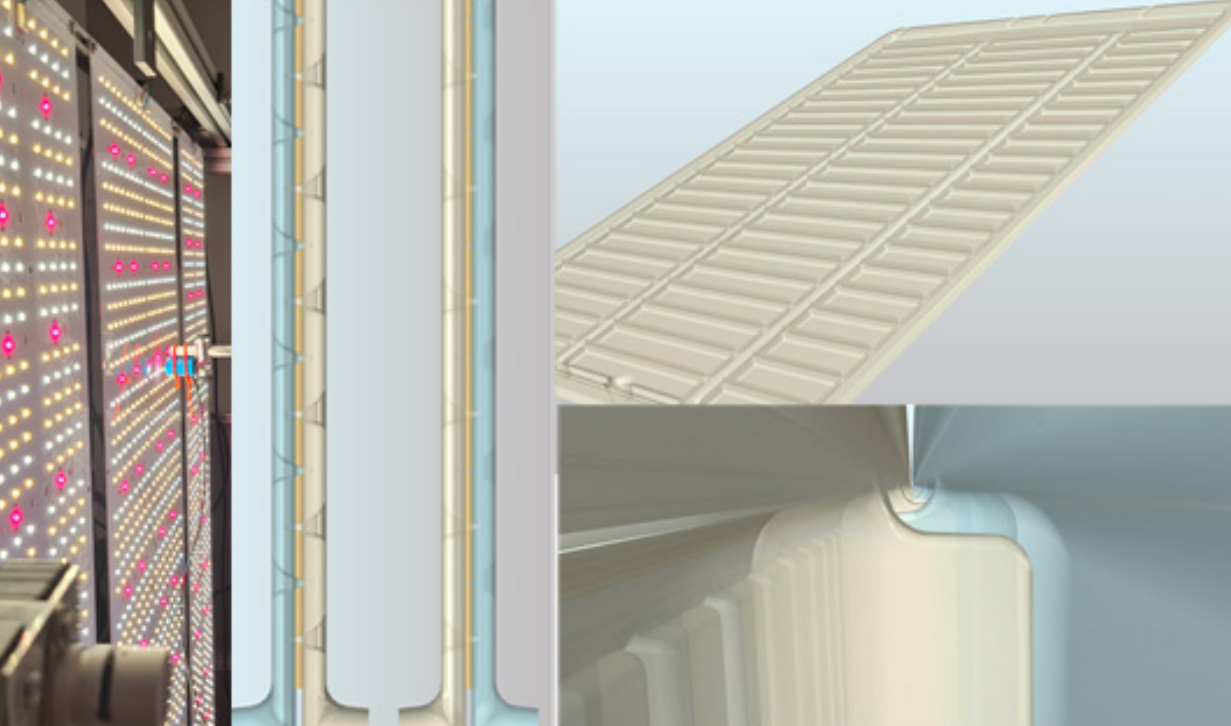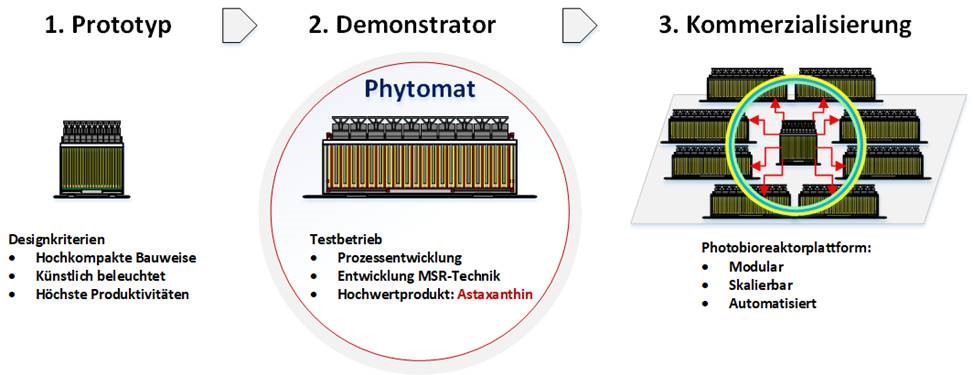The major advantage of flat-panel photobioreactors is that they distribute large amounts of light to all algae cells thanks to their high surface-to-volume ratio. Thorough mixing of the reactor volume increases this effect due to light integration. In comparison to other established systems, this leads to maximum biomass and product productivity, depending on which strain of algae is being cultivated [1]. Up until now, algae has mainly been cultivated outdoors, which involves heavily fluctuating light and temperature conditions. Even if the most advanced flat-panel reactor systems are selected, this method still only allows low space-time yields to be achieved. Another factor hindering widespread use of the systems is the immaturity of the technology. Particularly when it comes to enabling rapid, modular scaling and commercialization of the technology, the investment and operating costs will need to be brought down significantly first.
Higher productivity thanks to artificial lighting
Artificial light sources for photobioreactors are gaining currency as an alternative means of supplying algae with photons [2]. The LED industry has made major strides in efficiency over recent years and small mass-produced SMD chips are coming down rapidly in price. In turn, this is increasingly allowing industrial algae photobioreactors to be operated all year round regardless of the weather conditions and with a consistent level of product quality. Within this context, the electricity costs make up approximately 80 to 90 percent of the operating costs, with the cooling of the systems playing only a secondary role. Up until now, approximately 150 kWh of energy per kilogram of algae biomass has always been required for single-stage processes in industrial applications [3]. Initial laboratory results for artificial light sources are showing an improved energy input of approximately 80 to 100 kWh per kilogram of algae biomass coupled with a further significant increase in productivity compared to the volatile sunlight associated with outdoor systems.
Modular stack reactor with LED lighting
The Phyt-O-mat project aims to bring about a further reduction in the energy input per kilogram of algae biomass. With a view to achieving this aim, a new reactor prototype is being built. In addition to utilizing the light more effectively, this will enable the creation of a cost-effective reactor platform with modular scalability that can be used to good advantage within the process industry according to the algae strain, market and product involved. The aspects being incorporated into the concept not only include minimal downtime thanks to quick cleaning and the flexible handling of such plants, but also requirements such as the need for thorough mixing and beneficial temperature control during operation.
The key element here is the use of an innovative stack structure for the photobioreactors. When the yields of these systems are compared with agricultural production, according to our calculations the extremely compact design means that the same quantity of biomass can be produced within the space of just a few square meters as on a whole hectare of land using sunlight [3]. Assuming that electricity from renewable energy sources (such as photovoltaics) is used for systems of this kind in the future, we already have the evidence to show that – depending on the product – cost-effective operation is possible. Thus, the Phyt-O-mat project represents the key to further expanding the boundaries of cost-effectiveness and feasibility within the area of algae biotechnology.
 Fraunhofer Institute for Interfacial Engineering and Biotechnology IGB
Fraunhofer Institute for Interfacial Engineering and Biotechnology IGB

